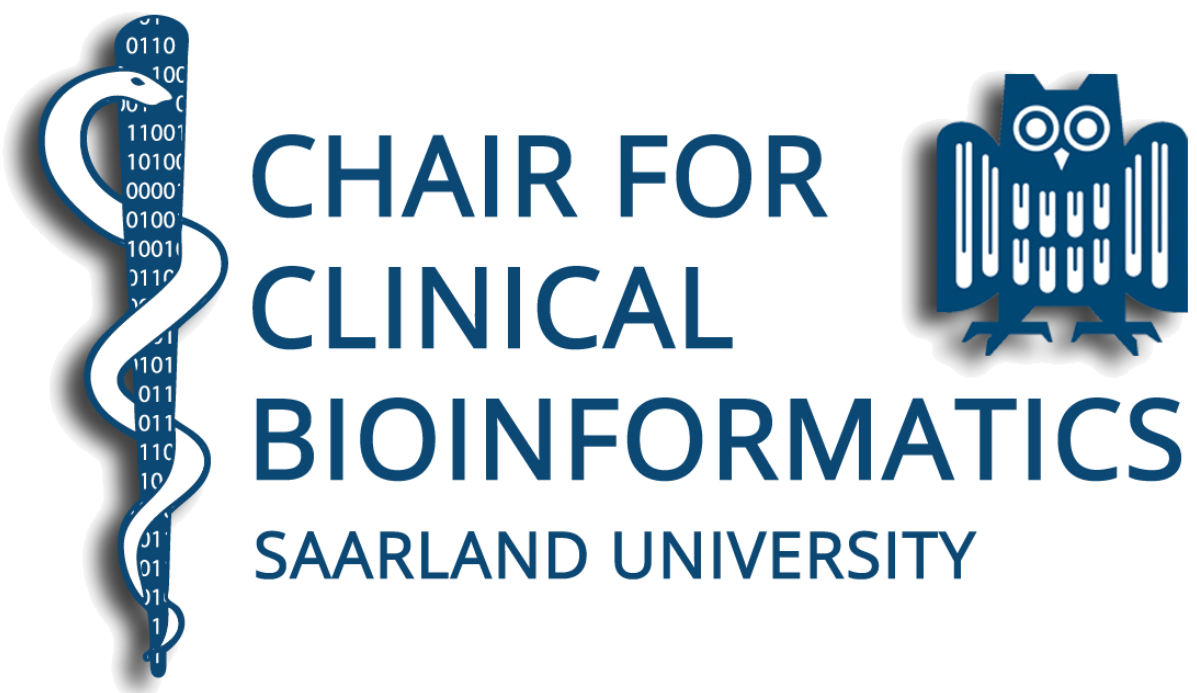This is a block Seminar for Bioinformatics students.
Overview: Reproducibility is an important aspect and criteria in bioinformatics research and research in general. Being able to reproduce findings presented is crucial for scientific credibility. During this seminar, you will have to reproduce certain aspects and figures from case-studies in groups of two across different fields in bioinformatics.
Dozent: Prof. Andreas Keller, Prof. Andrea Volkamer, Prof. Sven Rahmann, Prof., Jun. Prof. Fabian Müller, Jun. Prof. Alexey Gurevich
Tutor: Matthias Flotho, Annika Engel
Key Dates
| Registration * [mandatory] | From October 23 to November 03, 2023 HERE |
| Kick-off meeting [mandatory] | November 16, 2023 (Slides) |
| Summary submission deadline [mandatory] | November 30, 2023 |
| Deadline to (de-)register in HISPOS OR de-register from seminar * [mandatory] | December 07, 2023 |
| First Lecture Talk (Dr. Anne Dörr) [mandatory] | January 24, 2024, 2pm, E2.1 Room 001 |
| Presentations [mandatory] | See Table Below |
| Essay submission deadline [mandatory] | See Table Below |
Presentation Dates
| Group | Date | Time | Place | Essay Deadline |
| Keller | 28.02.2024 | 9 am – 1 pm | E2.1 R207 | 13.03.2024 |
| Volkamer | 21.02.2024 | 12 – 3 pm | E2.1 R406 | 06.03.2024 |
| Gurevich | 22.02.2024 | 10 am – 1 pm | E2.1 R106 | 07.03.2024 |
| Müller | 27.02.2024 | 9 am – 1 pm | A2.4 R0.33 | 12.03.2024 |
| Rahmann | 01.03.2024 |
** If you would like to get feedback about your slides, e.g. to improve your presentation before the talk, send your slides to the tutor before the feedback deadline. We strongly encourage you to take this opportunity. When asking for feedback the more complete the submitted presentation the more helpful our feedback can be. Thus, try to avoid submitting half-finished slides. Feedback will be provided at least once but at most twice per participant. Also, before sending in the slides, check out our support materials (presentation guidelines, presentation guidelines checklist). You must hand-in a (digital) copy of the completed guidelines checklist at latest when performing the presentation.
Please note: Your slides will make up a substantial part of the final grade. Reading and paying attention to the provided presentation guidelines will help you to get an impression of which aspects are relevant for the evaluation. Disregarding many of the points listed in the guidelines may negatively affect your grade.
Requirements for participation:
- Proseminar (Bachelor): at least in 3rd semester, Bioinformatics I
- Seminar (Master): no pre-requisites.
Good language skills are presumed as all talks will be held in English.
Certificate requirements:
- Summary of the assigned paper:
- Submission until November 30, 2023
- 3 pages (at least 1500 words in Arial with standard font size 12)
- Figures, tables and formulas are not required. Figures and tables are only accepted if they have been created completely by yourself and should be included in the 3 pages. If a figure or table is based on a figure or table in the paper, a reference to it must always be given. If a reference chapter is used, it should be additional to the 3 pages.
- The text should be written in your own words, no copying from the paper or other sources. The texts will be checked for plagiarism.
- We do not want any additional sources to be used in this summary. Only the assigned paper itself should serve as a source.
- Successful presentation:
- Talk: 30 minutes for a Pro-seminar and 40 minutes for a Seminar
- Discussion: 5 minutes during which you should be able to answer questions from the tutor(s)/audience
- Essay of the assigned paper:
- Submission until two weeks after the presentation (see Presentation Dates table)
- Main structure: Title (page), main text (with or without subsections), references
- Ca. 2 pages of text excluding title (page), section titles and the references (Arial with standard font size 12)
- Figures, tables and formulas are not required. Figures and tables are only accepted if they have been created completely by yourself and should be additional to the 2 pages.
- The text should be written in your own words, no copying from the paper or other sources. The texts will be checked for plagiarism.
- Here you should address questions and unclear points from your presentation. Therefore, you can use additional information from other sources, which must be referenced in the Reference section at the end. The Reference section should be excluded from the 2 pages.
- It is recommended to write the report using LaTeX in order to train scientific writing
Final grade based on
- the summary (25%)
- the presentation & follow-up discussion (50%)
- the essay (25%)
Topics
All manuscript files are either open-access or available via the university network using a secure VPN connection.
